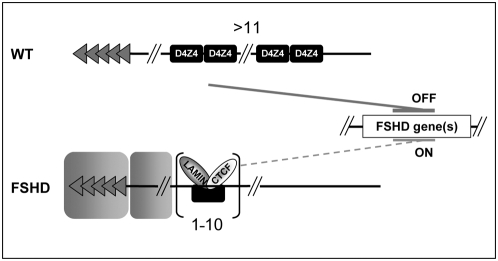Figure 6. Model explaining the role of the D4Z4 insulator and its implication in the epigenetic alteration of FSHD.
In normal cells, the multimerization of D4Z4 compromises CTCF binding and the boundary activity is counteracted (upper panel). In this conformation, the D4Z4 array might repress gene expression either at the 4q35 locus or at a long distance from the array. In patients, D4Z4 acts as an insulator that protects the expression of different loci from repressive structures such as the 4q terminus or other subtelomeric surrounding sequences. This boundary activity depends upon CTCF and Lamins A/C (lower panel). The exclusion of CTCF from multiple repeats and the presence of a silencer element within D4Z4 [7] might suggest that the D4Z4 array behaves as a silencer. However, the presence of up to 12 copies of the repeat does not repress the expression of the neighboring eGFP reporter in our experimental settings where the D4Z4 array directly flanks the telomere and argues against the hypothesis that multiple D4Z4 repress in cis the expression of genes. An alternative explanation is that multiple D4Z4 cooperates with other elements of the 4q region to form a silencer, as suggested by the link between D4Z4 array contraction and a particular allele of 4q35 in patients [37].

